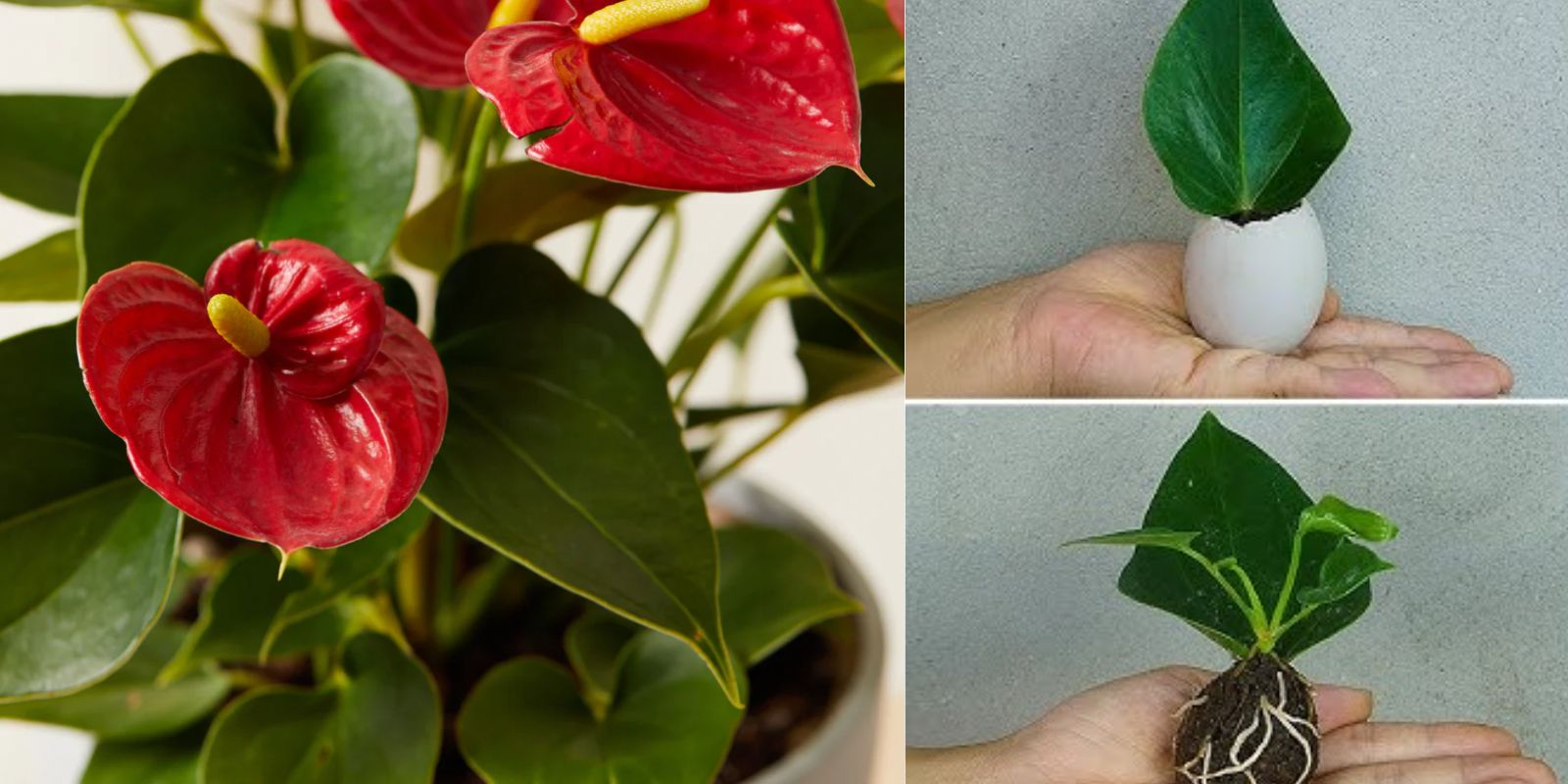Introduction
Anthuriums, known for their striking, glossy leaves and vibrant blooms, can sometimes face challenges that lead to wilting or a decline in health. If you’ve noticed your Anthurium looking less than its best, you’re not alone. Thankfully, there’s a magical solution that can restore its vitality with just one spoonful of a special ingredient. This article will guide you through this simple yet effective method, offering detailed steps and insights to bring your Anthurium back to life.
Understanding Anthurium Care
Before diving into the revival technique, it’s crucial to understand the basic care requirements for Anthuriums. These tropical plants thrive in warm, humid environments and prefer well-draining soil. They need consistent moisture, but overwatering can lead to root rot, so finding the right balance is key. Regular feeding, proper lighting, and occasional repotting also play significant roles in maintaining their health.
The Magical Ingredient
The secret to revitalizing a wilting Anthurium lies in a nutrient-rich solution or homemade plant food. The key ingredient can be a specialized plant food, a natural homemade mixture, or a balanced liquid fertilizer. Each of these options can provide essential nutrients and boost the plant’s recovery.
Step-by-Step Guide to Reviving Your Anthurium
1. Prepare the Solution
Choose the Right Ingredient
Decide on the type of nutrient-rich solution you want to use. This could be a commercial plant food designed for flowering plants, or a homemade solution such as diluted compost tea. If using a commercial product, follow the manufacturer’s instructions for dilution. For a homemade solution, you can mix a small amount of compost tea or other organic fertilizers with water.
Mix the Solution
In a clean container, mix one spoonful of the chosen ingredient with water. Stir the mixture well to ensure that the nutrients are evenly distributed. The goal is to create a diluted solution that will be gentle yet effective for your Anthurium.
2. Water the Plant
Apply the Solution
Gently water your Anthurium with the prepared solution. Make sure the solution reaches the roots by applying it evenly around the base of the plant. Avoid pouring the solution directly onto the leaves or flowers, as this can cause damage or promote fungal growth.
Monitor Soil Moisture
Ensure that the soil remains consistently moist but not waterlogged. Overwatering can be detrimental, so keep an eye on the soil’s condition and adjust your watering routine as needed.
3. Monitor and Adjust
Observe the Plant
After applying the solution, observe your Anthurium for signs of improvement. Look for changes such as perked-up leaves, enhanced color, and overall revitalization. This can indicate that the plant is responding positively to the treatment.
Make Adjustments
If you notice gradual improvement, continue to water with the nutrient solution every few weeks. If there’s no noticeable change or if new issues arise, consider adjusting the concentration of the solution or reevaluating other aspects of your plant care routine.
Why This Method Works
The magic behind this method lies in the nutrient boost that the solution provides. Plants require a variety of nutrients to maintain health and vitality, and when these nutrients are lacking, they can show signs of stress, including wilting. By providing a concentrated dose of essential nutrients, you help the plant recover and regain its strength.
Additional Tips for Anthurium Care
- Proper Lighting: Ensure your Anthurium receives bright, indirect light. Too much direct sunlight can scorch the leaves, while too little light can hinder growth.
- Humidity Levels: Maintain high humidity around the plant to mimic its natural tropical environment. You can use a humidity tray or a room humidifier if needed.
- Soil Quality: Use a well-draining potting mix designed for tropical plants. Consider adding perlite or orchid bark to improve drainage.
- Regular Feeding: Feed your Anthurium with a balanced fertilizer every 6-8 weeks during the growing season to support healthy growth and blooming.
- Pruning: Remove any dead or yellowing leaves to encourage new growth and prevent disease.
Common Challenges and Solutions
- Overwatering: Wilting can sometimes be a sign of overwatering rather than under-watering. Ensure that the soil has proper drainage and adjust your watering schedule if necessary.
- Nutrient Deficiency: If the plant continues to struggle despite treatment, a more detailed soil test may be needed to identify specific nutrient deficiencies.
- Pests and Diseases: Check for signs of pests or diseases that might be affecting your Anthurium. Common issues include spider mites and fungal infections, which can be managed with appropriate treatments.
Conclusion
Reviving a wilting Anthurium with just one spoonful of a nutrient-rich solution is a simple yet effective gardening trick that can bring your plant back to vibrant health. By understanding the needs of your Anthurium and providing it with the right care, you can enjoy its stunning foliage and blooms for years to come. Embrace this magical technique and share your success with fellow gardeners to inspire others and enhance their gardening experiences.
Encouragement for Gardeners
Take advantage of this easy trick to revitalize your Anthurium and watch as it transforms into a flourishing beauty. Don’t forget to share your gardening journey and inspire others with this magical method! 🌿✨ #AnthuriumCare #PlantRevival #GardeningHacks #GreenThumb #HomeGardening #PlantRescue #GardenMagic #HealthyPlants #GardeningTips

